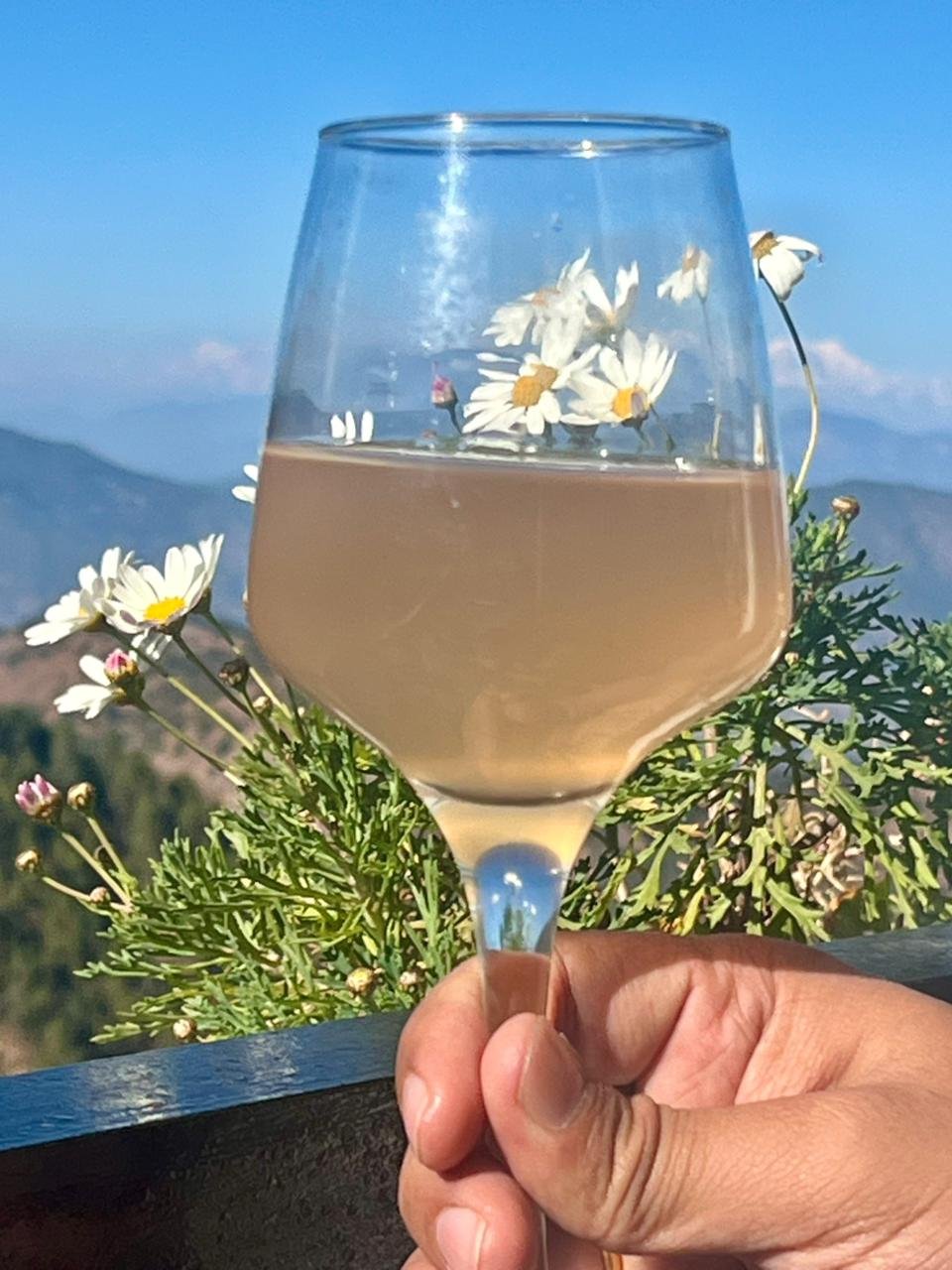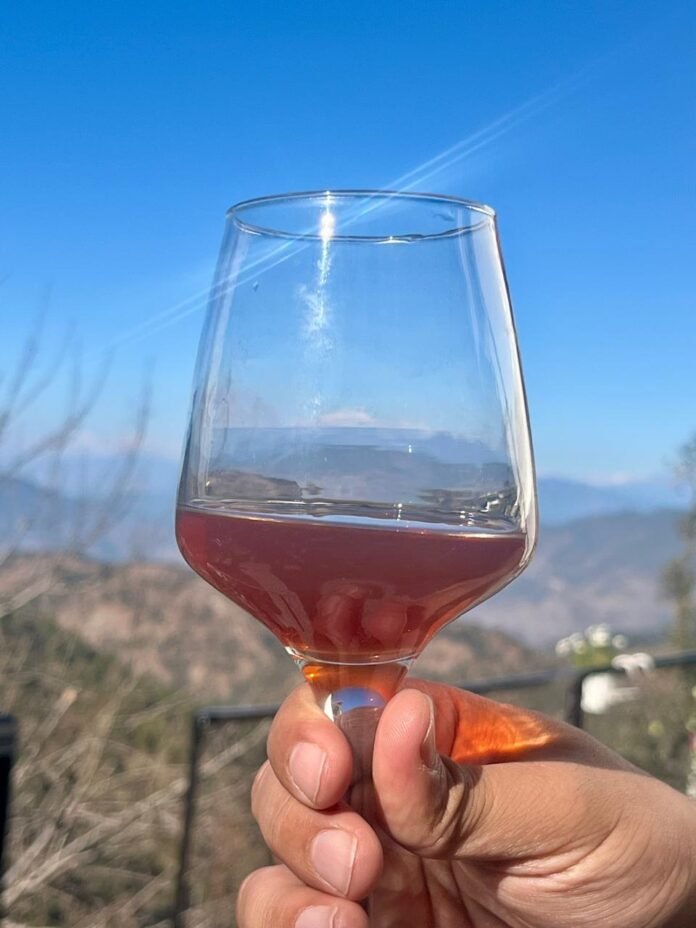In 2024, the Uttarakhand government made a landmark move by permitting distillery units in the hills under its new excise policy. For a state better known for its apples, pears, peaches, and the elusive kaphal berry, the policy has created an unexpected buzz: fruit wine. With excise duty exemptions of up to 15 years, the policy not only offers fiscal incentives but also hints at a new identity for the state—one that marries agriculture with lifestyle tourism.
The First Sip: Kotdwar Leads the Way
The state’s first fruit wine tourism project was launched in Kotdwar. Here, visitors can stroll through vineyards and orchards, peek into production units, and watch apples or peaches transform into bottled blends. The idea is simple but powerful: give tourists an immersive experience where local produce meets modern winemaking.
According to officials, the experiment is already drawing attention. “When you taste a glass of apple wine made just a few kilometers from where the fruit was harvested, you also taste the freshness of the hills,” said a tourism department representative during the inauguration. Plans are now underway to expand similar ventures to Bageshwar and Champawat, regions with rich fruit diversity.
Farmers as Entrepreneurs

For decades, hill farmers have struggled with declining returns on fruits. Fluctuating demand, transportation hurdles, and wastage due to perishable produce cut into profits. Fruit wine presents a promising alternative. By channeling surplus or second-grade fruits into wineries, farmers can earn additional income while reducing post-harvest losses.
Ramesh Rawat, an apple grower from Ramgarh, put it simply: “Earlier, bruised apples fetched almost nothing. Now, a kilo that once rotted in storage may end up in a premium wine bottle.”
Beyond Apples: The Flavors of the Hills
While apples and pears dominate orchards in Kumaon, the state is experimenting with other flavors too. Kaphal—an indigenous wild berry with a cult-like status in local folklore—may soon find itself in niche wine bottles. Similarly, citrus fruits like malta and kinu could create tangy blends that distinguish Uttarakhand wines from those in Himachal Pradesh or Maharashtra.
Food historian Deepa Joshi explains: “The romance of Uttarakhand lies in its lesser-known fruits. A kaphal or buransh (rhododendron) wine is more than a drink—it’s cultural storytelling in a glass.”
Wine Tourism: The New Frontier
Globally, wine trails—from Napa Valley to Bordeaux—are economic engines. Uttarakhand hopes to script its own version. The Kotdwar winery already offers guided tours and tasting sessions. If replicated across hill districts, this could diversify tourism beyond pilgrimages and adventure.
Tour operators see potential in packaging itineraries: morning trek through orchards, afternoon winery tour, evening folk music with a local fruit wine tasting. It not only enhances the tourist experience but also creates employment for guides, artisans, and hospitality providers.
Challenges Ahead
Yet, challenges remain. The infrastructure for wine-making requires investment in fermentation tanks, bottling units, and cold storage. Transport bottlenecks in hill regions can complicate distribution. There’s also the question of marketing—will Indian consumers, used to grape wines, develop a palate for apple or peach varieties?
Excise and tourism officials, however, are optimistic. With government backing and tax exemptions, they believe fruit wine can carve out a niche, especially among urban consumers looking for novelty.
A Sustainable Model
Environmentalists cautiously welcome the move, noting that fruit wine production uses existing orchards rather than encouraging mass deforestation. Moreover, by reducing wastage, the model enhances sustainability. “If managed well, it can be a circular economy—farmers, tourists, and the environment all benefit,” says conservationist Rajendra Panwar.
Looking Ahead
With fruit wineries now taking root, Uttarakhand has the potential to position itself as a unique tourism destination. The idea of walking through lush orchards in Hartola, Mukteshwar, or Ramgarh, followed by a guided session on how apples or pears are turned into wine, could offer visitors a refreshing alternative to conventional hill-station itineraries.
Tourists are increasingly looking for experiences that combine nature, local culture, and learning. A “day in the orchard” experience—where guests pick fruits, watch small-batch wine production, and enjoy tastings with traditional Kumaoni snacks—could become a signature attraction.
For many travelers, sipping a glass of apple or peach wine after a walk in the Himalayan orchards is not just leisure—it is a way to connect with the land and its people. If scaled thoughtfully, fruit wine tourism could place Uttarakhand firmly on the map of experiential and eco-friendly tourism, while ensuring better incomes for farmers and new opportunities for rural youth.


























